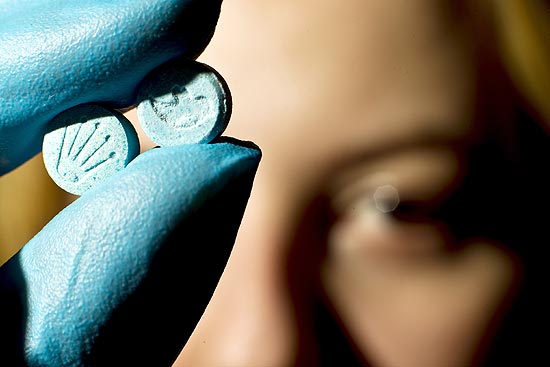Brazil Drug News

SAO PAULO — A new study shows that most of the ecstasy seized by police in the state of São Paulo during the past year is bogus, reported Brazil’s largest circulation newspaper on Sunday. The study shows that only 44.7% of the synthetic drug seized in the state during the sample period contained the active ingredient in ecstasy, MDMA.
São Paulo Ecstasy Mostly Bogus
The Technical and Scientific Police of São Paulo, together with the São Paulo Research Foundation (FAPESP), analyzed 150 samples from various drug seizures made by police between August 2011 and July 2012.
The samples contained over 20 substances, such as ingredients typically contained in weight loss pills, horse anesthetic, various psychotropic substances, caffeine, amphetamine and methamphetamine. All the tablets looked like ecstasy and they bore the emblems of various ‘brands’, such as Apple, ET, and Calvin Klein.
“Previously we thought they were ecstasy tablets, but the results show that half the tablets do not contain MDMA in their constitution,” the study’s author, Jose Luiz da Costa, president of the Brazilian Society of Toxicology, told Folha de São Paulo.
Police seized the drugs used in the study in various cities around the state of São Paulo. This is the most comprehensive study done on the subject to date. In 2005, the University of São Paulo analyzed 24 samples, and 84% contained MDMA – some samples with more or less than others.
Psychiatrist Dartiu Xavier, an addiction specialist, said that Costa’s research confirms what he has observed in hospital emergency rooms. “Before, it was ecstasy. But some years ago we began to notice a difference,” Xavier told Folha.
“Some people take the pill and it goes very badly. They present with hypertension, arrhythmia and even heart attack or stroke. Now, these are not the symptoms of ecstasy.”
According to Xavier, except for beginners, all buyers are already aware of the tampering. Users contacted with a promise of anonymity by Folha confirmed the doctor’s claim.
“They know the chances are high that they are buying a pig in a poke but they don’t know the danger it represents,” says Xavier. “The problem is that there is no quality control on the black market,” he added.
Of Brazilian university students, 7.5% admit experimenting with ecstasy. Another 13.5% say they have used amphetamines. Marijuana is the most often used illicit drug in Brazil.


